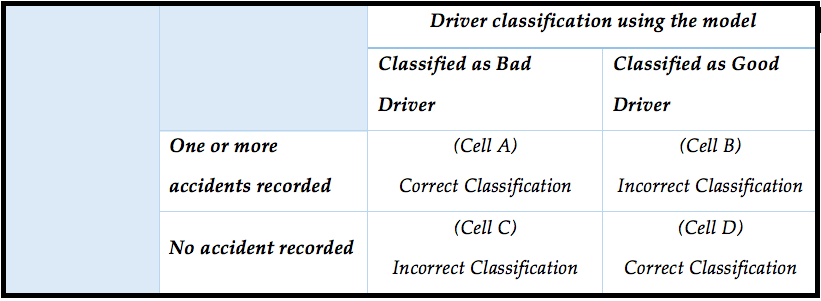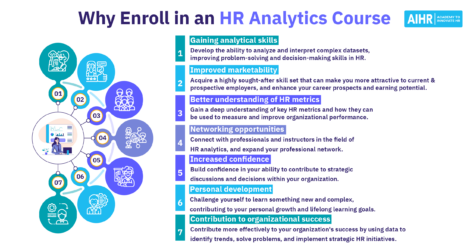Reducing Workplace Accident using People Analytics

In this post, we present the results from a research study on using psychometric tests to predict road traffic accidents (RTA) at a local company in Zimbabwe. The impact of accidents is grave: it impacts the drivers, client property, insurance rates, and the vehicles they operate. We tested 54 drivers using different psychometric tests to find out if we could predict superior driving performance for new hires. The surprising results totally changed the way our client hired new drivers.
To do this we tested 54 drivers from a local company in Zimbabwe using the Fitness To Drive Plus Vienna Test System. Each driver’s test results were then matched with his/her record of road traffic accidents from 2014 to 2015. This allowed us to build a logistic regression model (using psychometric results and accident records) that distinguishes good drivers from bad drivers.
Objectives
The main objective of the research is to ascertain the psychometric attributes that can be used to identify if an individual is a good or bad driver. The logistic regression model that is subsequently built is meant to quantify a driver’s proneness to accidents using their Psychometric Test scores.
Key Findings
- We established that psychometric attributes of an individual can be used to predict proneness to road traffic accidents.
- We built a logistic regression model that distinguishes drivers who had a road traffic accident record and drivers who did not have a record with an accuracy rate of approximately 72%.
- Concentration and Reactive Stress Tolerance dimensions had a statistically significant relationship with road traffic accident records.
- There was no significant evidence in the data that we analysed to suggest that holders of a Defensive Driving Certificate (DDC) are less prone to accidents than non-holders. In other words, there was no significant evidence to suggest that holders of a DDC are better drivers than non-holders of a DDC.
- The age of a driver and the number of years an individual has had a driver’s license have fairly significant relationships with the number of RTA. In other words older and more experienced drivers are likely to have less accidents than younger and less experienced drivers.
Who was involved in more accidents?
Next, we will display some data visualizations that provided us input on road safety.
The chart shows that 26% of the accidents involved personnel that is between the ages of 31 and 35 years.
The chart shows the distribution in years of service with the company. 52% of the accidents during the period under study involved drivers/ riders that had recently joined the company, i.e., those with 5 years of service and below.
60% of personnel involved in RTA did not possess a Defensive Driving Certificate (DDC). On the other hand, approximately 4 in every 10 of the drivers/ riders possessed a Defensive Driving Certificate. This raises the question of whether holding a DDC or not changes a driver’s accident risk.
Defensive Driving Certificate: A waste of time and money?
In our analysis of proportions, we noted that there is no significant evidence to suggest that holders of a DDC are less prone to accidents than non-holders. Put simply, there is no evidence from the data that holding a DDC makes a driver less prone to accidents. Companies investing in DDCs may not be realizing any value from it.
Using Logistic Regression to Identify Road Traffic Accident Risk
We built a logistic regression model that distinguishes drivers that are susceptible to road traffic accidents from those that are less prone to accidents. The Fitness To Drive Plus Vienna Test has the following areas of assessment which we included in the logistic regression model:
- Concentration – Is a special function of attention, namely selective attention. In driving this is called on every time that a stimulus needs to be shielded from other stimuli and concentration needs to be shifted from one stimulus to another – for example when approaching an uncontrolled intersection. Accident analysis has shown that the majority of recorded traffic accidents are attributable to inattention
- Peripheral Perception – Is the perception of objects and stimuli outside the visual fixation point. Peripheral perception is needed, for example, in order to notice vehicles or people appearing from the side. In the literature on the visual aspects of driving (e.g. Rockwell et al., 1977; Hartmann 1980), peripheral perception is discussed mainly in connection with the estimation of speed, control of the vehicle and monitoring of the driving environment. Because peripheral perception functions are an important aspect of driving, it is assumed that deficiencies or failures of peripheral perception are a major cause of accidents.
- Reaction Speed – Is the time that elapses between stimulus presentation and the start of the mechanical response movement. A high reaction speed (short time) means that the respondent is good at responding with appropriate speed to relevant stimuli or stimulus constellations.
- Motor Speed – This score provides information about the respondent’s speed of movement. A high motor speed (short time) means that the respondent is good at implementing planned action sequences with appropriate speed in reaction situations.

Please refer below for the results of the logistic regression model:
As shown in the table above, only two (2) of the dimensions (areas of assessment) have a significant relationship with a driver’s road traffic accident risk (p-values were less than 5%). Although the model has only two significant assessment areas, inclusion of all dimensions in the model leads to an improved classification of drivers’ accidents risk profiles.
Accuracy of the Logistic Regression Model


We used the classification table below (confusion matrix) to assess the validity of the logistic regression model.
The logistic regression model correctly classified 72% of the drivers that came for testing, i.e., the model placed 72% of the drivers in Cells A and D.
The table above shows that the model’s true positive rate was 57%, i.e., among the drivers that were classified as bad drivers, 57% of them had had accidents. The model’s true negative rate was 84% implying that among the drivers that were classified as good drivers, 84% of them had not been involved in road traffic accidents in the years 2014 and 2015.
Business case
We have established that Psychometric profiles can be used to identify a driver’s proneness to road traffic accidents with high accuracy. This implies that without any prior road traffic accident record, the company can use appropriate psychometric tests to decide whether or not you should hire a driver or machine operator in general.
The same approach can also be used to identify training needs among drivers who are already part of the organization. In the event that the model has identified a certain driver’s road accident risk as too high, the driver may be re-assigned to other areas of operation in the organization. Doing this will reduce the costs incurred as a result of accidents. Such costs include higher insurance premiums, repairs that expedite “wear & tear”, lost productivity, both client and company property damage, loss of business or clients, and even loss of lives.
Demographic variables such as driving experience can be misrepresented by prospective drivers. For this reason, we recommended that for recruitment purposes, psychometric tests be used. They have the advantage of being objective and cannot be misrepresented.
We also noted in our data exploration that holders and non-holders of a Defensive Driving Certificate bear the same road traffic accident risk. This affirms our approach that the use of psychometric tests is highly recommendable.
References
- Burgard E. (2005). Fahrkompetenz im Alter. Die Aussagekraft diagnostischer Instrumente bei Senioren und neurologischen Patienten. Medical Faculty, Dr. hum. biol., from http://edoc.ub.uni-muenchen.de.proxy.library.uu.nl/4478/1/Burgard_Esther.pdf.
- Hartmann, E., Scheffzyk-Hagl, A., & Lachenmayr, B. (1980). Influence of luminous intensity, contrast and color on vision in patients with slight to severe visual defects. Klinische Monatsblatter fur Augenheilkunde, 177(3), 304-318.
- Rockwell, T. H., Balasubramanian, K. N., Kretovics, T., & Wilfong, E. J. (1977). The utility of peripheral vision to motor vehicle drivers.
Weekly update
Stay up-to-date with the latest news, trends, and resources in HR
Learn more
Related articles
Are you ready for the future of HR?
Learn modern and relevant HR skills, online














